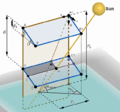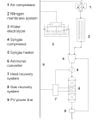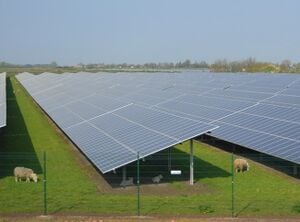
Agrivoltaic systems are a strategic and innovative approach to combine solar photovoltaic (PV)-based renewable energy generation with agricultural production. Recognizing the fundamental importance of farmer adoption in the successful diffusion of the agrivoltaic innovation, this study investigates agriculture sector experts' perceptions on the opportunities and barriers to dual land-use systems. Using in-depth, semistructured interviews, this study conducts a first study to identify challenges to farmer adoption of agrivoltaics and address them by responding to societal concerns. Results indicate that participants see potential benefits for themselves in combined solar and agriculture technology. The identified barriers to adoption of agrivoltaics, however, include: (i) desired certainty of long-term land productivity, (ii) market potential, (iii) just compensation and (iv) a need for predesigned system flexibility to accommodate different scales, types of operations, and changing farming practices. The identified concerns in this study can be used to refine the technology to increase adoption among farmers and to translate the potential of agrivoltaics to address the competition for land between solar PV and agriculture into changes in solar siting, farming practice, and land-use decision-making.
External resources for agrivoltaics[edit | edit source]
See also[edit | edit source]
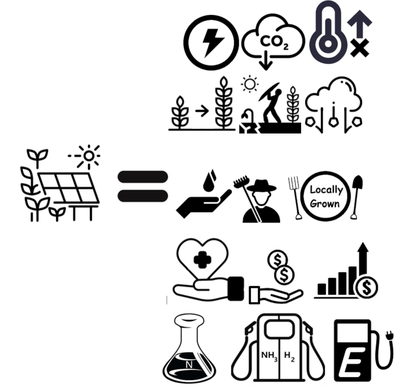
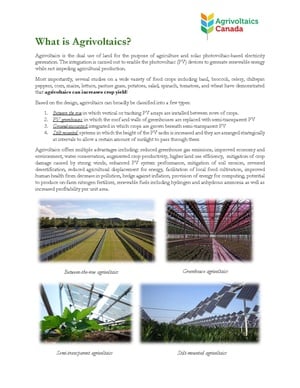
- Coal with Carbon Capture and Sequestration is not as Land Use Efficient as Solar Photovoltaic Technology for Climate Neutral Electricity Production
- Dual use of land for PV farms and agriculture literature review
- sheep
- Israeli white plastic reflectors
- A Farmer's Guide to Going Solar (NREL)
- German guidelines: https://www.ise.fraunhofer.de/content/dam/ise/en/documents/publications/studies/APV-Guideline.pdf
- 2021 review
- Miskin, C.K., Li, Y., Perna, A., Ellis, R.G., Grubbs, E.K., Bermel, P. and Agrawal, R., 2019. Sustainable co-production of food and solar power to relax land-use constraints. Nature Sustainability, 2(10), pp.972-980.
- Retrofitting solar parks for agrivoltaics
- Shading PV
- Alexis' talk at American Solar Grazing Association2021
In the News[edit source]
- Agrivoltaics: solar energy + better crops Climate and Nature
- Why solar power and farmers’ fields could be the perfect combination TVO
- Solar farms and sheep show the makings of a clean energy classic duo Business Renewables
- Agrivoltaics charge up St. Albert-area farms St Albert Gazette
- Sheep, solar and crops. How some Alberta farms are creating ideal growing conditions Western Wheel
- Sheep, solar and crops. How some Alberta farms create ideal growing conditions Voxpopuli
- 3D printed clamps for front-surface PV mounting on wood racking PV Magazine
- Harvesting the Sun to Grow in the Shade Garden Culture Magazine
- What crops fit with vertical agrivoltaics? PV Magazine
- Agrivoltaics – Keeping the farm in the solar farm Green Energy Futures























